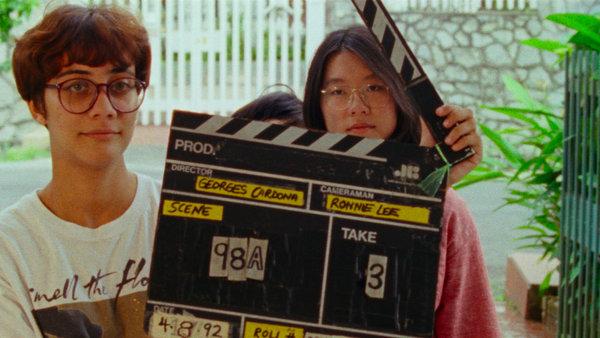Movies Lost and Found: 'Shirkers,' 'A Star Is Born' and More
Movies Lost and Found: ‘Shirkers,’ ‘A Star Is Born’ and More
The process of filmmaking has been so established for so long — a well-trod path from script to deal to production to release — that there’s something thrilling, even subversive, about films lost and rediscovered, scenes tossed and restored, and movies that go unfinished for years or even decades. Two long-unfinished projects, Orson Welles’s “The Other Side of the Wind” and Sandi Tan’s “Shirkers,” are now streaming on Netflix; those pictures, an earlier version of “A Star Is Born” and other butchered classics make for fascinating stories of cinematic archaeology.
‘Metropolis’
This bracingly visionary and wildly influential 1927 science-fiction epic from the director Fritz Lang was cut by 40 minutes by its German studio shortly after its release and further trimmed by the American distributor Paramount. Shabby public-domain versions circulated on film and video for years until a 2002 rescue job by German preservationists restored the work to what seemed its fullest possible form. And then, a miracle: In 2008, a complete 16-millimeter print of Lang’s original cut turned up in the Museo del Cine in Buenos Aires, including 25 minutes of long-thought-lost footage. And so “Metropolis” was restored again, finally approximating its original form for the first time in 90 years. (Available online and on Blu-ray and DVD.)
‘Napoleon’
Abel Gance’s 1927 biopic was always a work in flux: Running six-plus hours at its premiere, it was cut to barely three for its European release and then to a mere 80 minutes for American audiences. The film historian Kevin Brownlow first saw an excerpt from the film as a schoolboy and was so taken by it, he made restoring “Napoleon” his life’s work — chasing down reels and prints from around the world, dead set on recreating Gance’s epic vision. A four-hour version screened at Radio City Music Hall in 1981 and was a surprise box-office smash, but Brownlow is still digging; his current iteration of “Napoleon” clocks in at five and a half hours. (Available on British-format Blu-ray and DVD.)
‘The Passion of Joan of Arc’
Carl Theodor Dreyer’s 1928 masterpiece was borderline cursed: The original negative was destroyed in a studio fire shortly after its release, so Dreyer assembled a new cut from outtakes and alternate shots, only to lose that negative in another fire. The prints that circulated in the following decades varied greatly in quality and content, because of the lack of a master negative and the trims of government censors. But film historians hit the jackpot in 1982 with the discovery of Dreyer’s original cut, found in pristine condition in the closet of a mental hospital near Oslo; a doctor there had requested a print shortly after the film’s premiere, and its distributor never asked for it back. That version includes more than 15 minutes of restored footage. (Available on DVD and Blu-ray.)
‘Drácula’ (Spanish Version)
In the early, pre-dubbing and pre-subtitle days of talking pictures, studios tried to preserve lucrative overseas revenue by shooting alternate, foreign-language versions of their biggest pictures. So the director Tod Browning and the star Bela Lugosi shot their 1931 vampire classic on the Universal lot during the day; the director George Melford and his cast took over the sets on the night shift, shooting a Spanish-language version that was sexier, moodier and (most agree) better than its companion. But “Drácula” disappeared — even the Library of Congress had only a partial print — until the early 1990s, when the Cinemateca de Cuba in Havana announced it had a complete copy. That print was digitized, restored and released in a shiny Blu-ray edition.
‘A Star is Born’ (1954 Version)
The martial arts instructor and motivational speaker Y.K. Kim’s fusion of ninja thriller and rock musical went absolutely nowhere in a small, self-financed 1987 release, and it probably would have remained in the dustbin of history if Zack Carlson hadn’t reached in 22 years later. Carlson, a programmer for the Alamo Drafthouse, bought a 35-millimeter print of “Miami Connection” for $50 on eBay, hoping for an addition to the chain’s rotation of forgotten oddities — and boy did he get one. The Drafthouse crowds were so taken by its amateurish production and awkward sincerity that the company’s film distribution arm restored the picture and rereleased it, allowing it to achieve its true destiny as a goofy yet charming cult classic. (Available online and on disc.)
‘The Other Side of the Wind’
Related Coverage
Review: ‘The Other Side of the Wind’ Is Orson Welles’s Haunted Hall of Mirrors
Review: In ‘Shirkers,’ Stolen Footage and Dashed Dreams
Review: ‘A Star Is Born’ Brings Gorgeous Heartbreak
Holiday Movies 2018: All Creatures Great and Small
Sign up for the Watching Newsletter
Get recommendations on the best TV shows and films to stream and watch, delivered to your inbox.
Please verify you’re not a robot by clicking the box.
Invalid email address. Please re-enter.
You must select a newsletter to subscribe to.
* Invalid email address. Please try again.
* Captcha is incomplete. Please try again.
Thank you for subscribing.
View all New York Times newsletters.
An error has occurred. Please try again later.
You are already subscribed to this email.
View all New York Times newsletters.
- Manage Email Preferences
- Opt out or contact us anytime
- Privacy Policy
Let’s block ads! (Why?)

